Pathways for Patriots: 10 Rail-Trails with American Revolution Sites
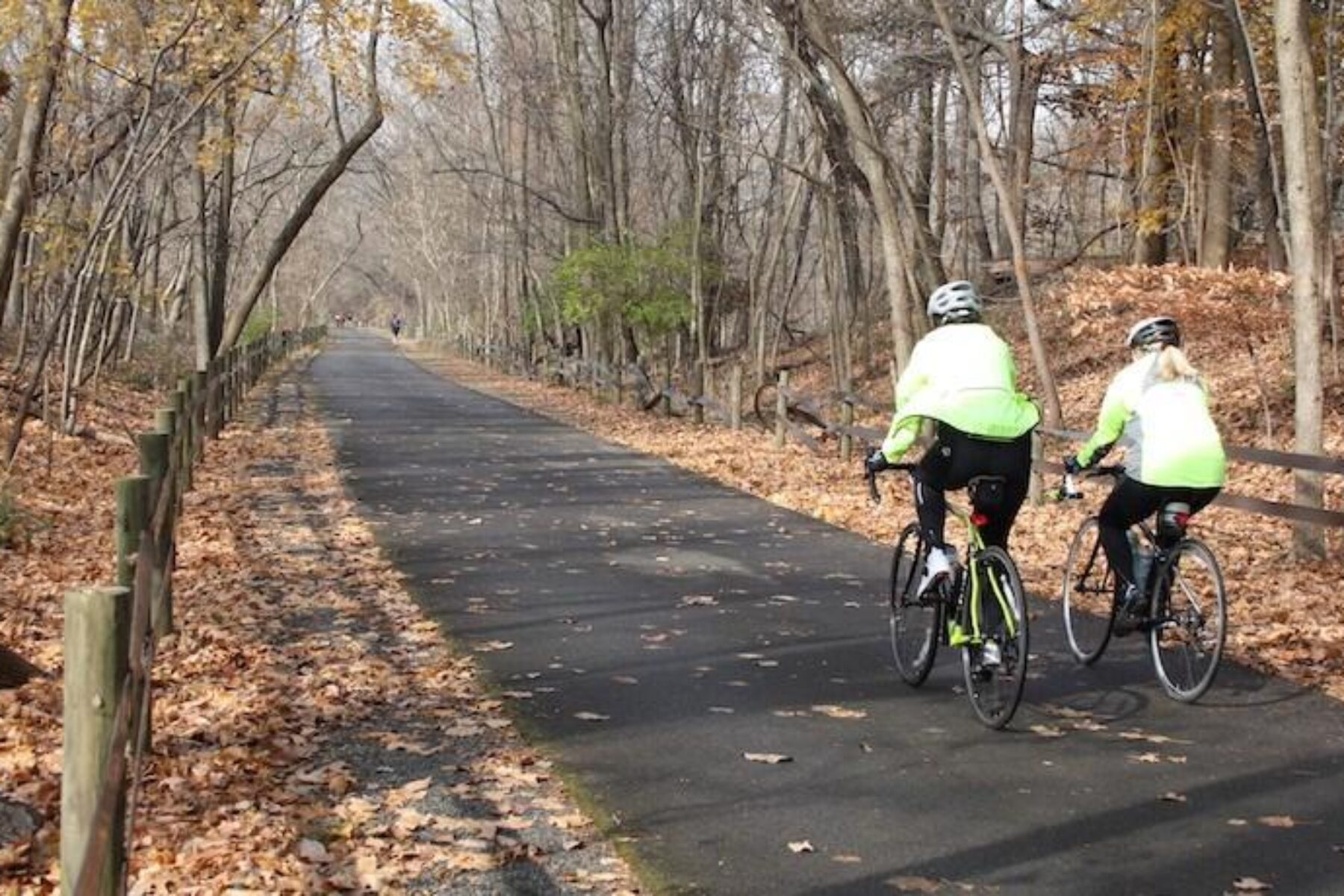
The Fourth of July is a holiday celebrated with barbecues, fireworks and family. It is also a time to reflect on our country’s history, and what better way to do that than by exploring a historical rail-trail?
From battle sites to hidden histories, rail-trails are an accessible way to celebrate our nation’s birthday and uncover pivotal moments in our past. Some of these trails are included our new 2019 Rail-Trails: Pennsylvania and Rail-Trails: New Jersey & New York guidebooks.
Take your day off to embark on a patriotic promenade—complete with American Revolution sites!
1. Minuteman Commuter Bikeway (Massachusetts)
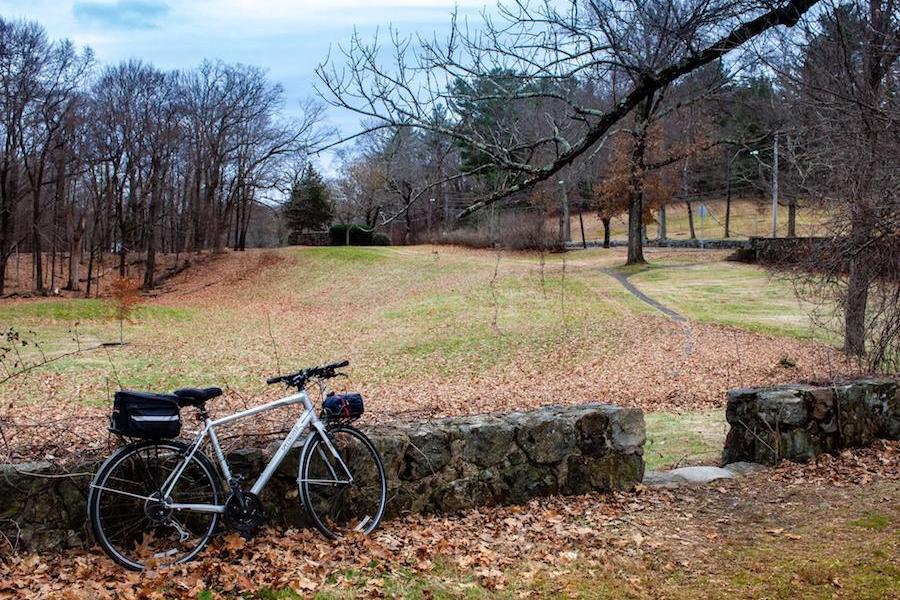
The Minuteman Commuter Bikeway doesn’t just make history for helping combat Boston traffic—this 10-mile trail offers a whole host of opportunities to pedal into the past. The trail follows Paul Revere’s midnight ride in April 1775 to alert local militias about approaching British troops. Trail users can also stop for a quick water break to check out trailside displays that document the first battles of the Revolutionary War.
A couple of blocks off the trail, in Arlington, you can learn about the Battle at the Foot of the Rocks—a bloody conflict which took place on the very first day of the war. The adventure continues to unfold as you pass two additional battle sites: the 180-acre Great Meadows, then the Tower Park picnic grounds.
Munroe Tavern is next and once served as headquarters for the British in the early days of the conflict. Your historical outing will end with the Lexington Visitor Center, which is just a block away from the Lexington Battle Green, where minutemen faced British soldiers.
2. D&L Trail (Pennsylvania)
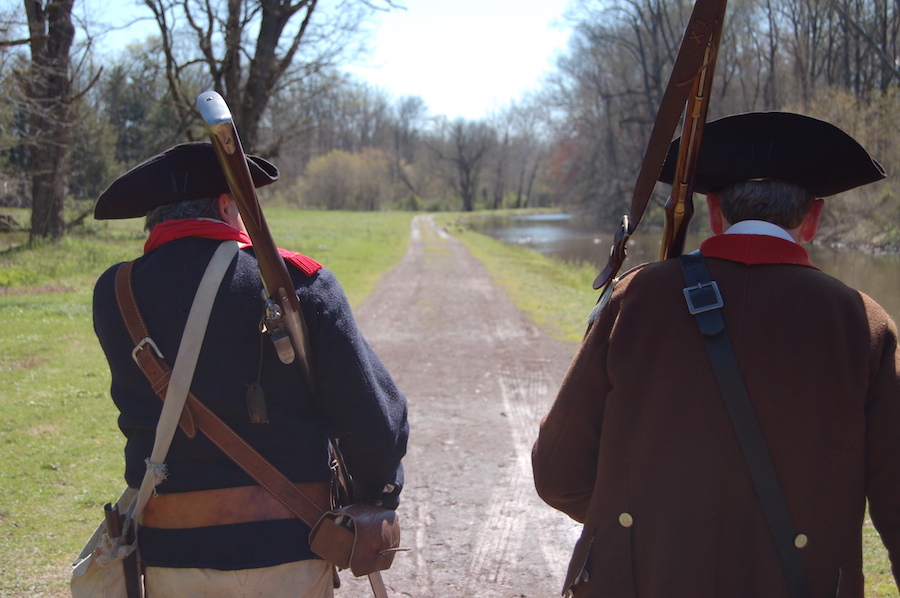
It was “a hurricane” of a winter night during Christmas of 1776. George Washington and the Continental Army’s victory against British troops helped lift the spirits of the soldiers, who had been braving the dead of winter with quickly dwindling supplies.
This extensive, 142-mile route is home to one of the most historic sites of the Revolutionary War. Pennsylvania’s D&L Trail traverses Washington Crossing Historic Park, which commemorates that momentous Christmas night—considered the turning point of the American Revolution. The 500-acre park also features a historical village, educational exhibits and a climb up Bowman’s Hill Tower. The tower was built in the 20th century to highlight what some believe was once a lookout point for Washington’s troops.
In Allentown, 1.5 miles from the trail, you can see where the Liberty Bell was hidden during the war. The Pennsylvania government feared the British would melt the bell down to be recast into cannons. In September 1977, the Liberty Bell was smuggled out of Philadelphia on a hay wagon and stashed under a church floor in Allentown. The Zion’s Reformed United Church of Christ now has a museum and replica of the previously concealed bell.
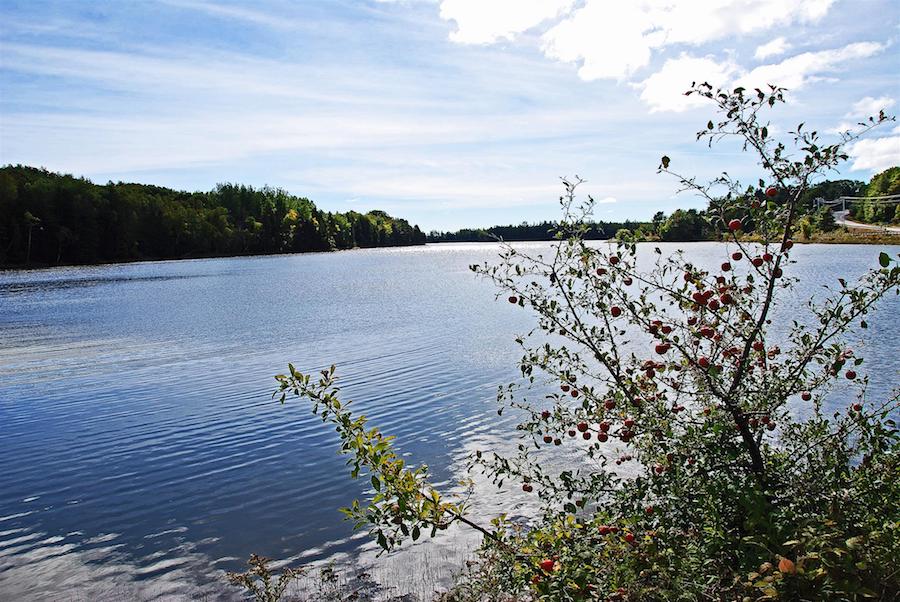
3. Down East Sunrise Trail (Maine)
The first leg of Maine’s 88-mile Down East Sunrise Trail will take you to the coastal town of Machias—the site of the very first naval battle of the American Revolution! During the 1775 Battle of Machias, Americans banded together, and with handmade weapons and an abundance of courage, seized a British ship.
Just blocks from the trail, you can find the historical Burnham Tavern, which is home to artifacts from the battle. The tavern also served as a home base and hospital for the wounded. Now, the building is a museum run by the Daughters of the American Revolution and is listed on the National Register of Historic Places.
4. Schuylkill River Trail (Pennsylvania)
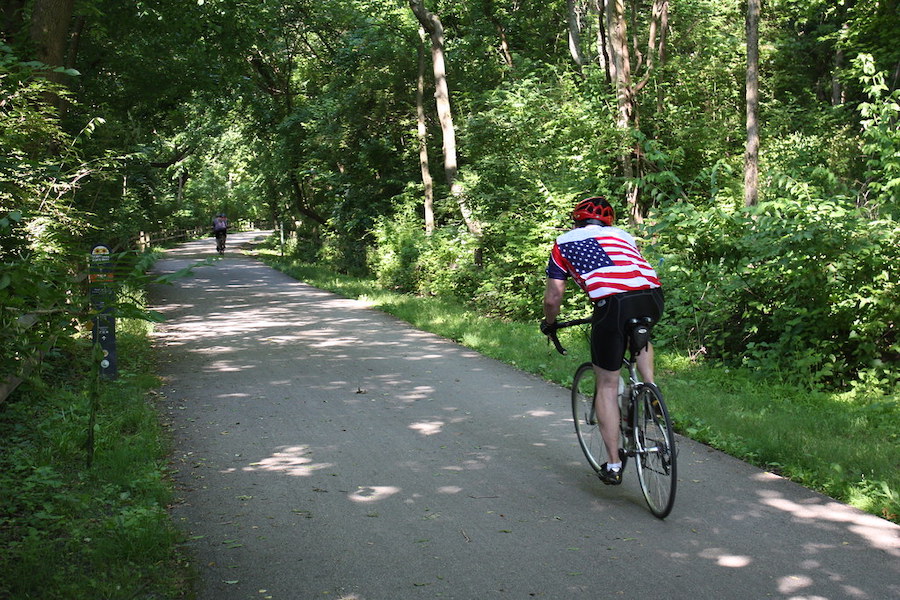
Pennsylvania’s 72-mile Schuylkill River Trail whisks travelers away from the bustle of Philadelphia to Valley Forge National Historic Park, where thousands of Continental Army soldiers camped during the winter of 1777–78. The British had control of Philadelphia—the patriot capital—and so the army chose the easily defendable plateau to train and recover from both battles and bitter temperatures.
The park, dotted with monuments, has numerous historical destinations to explore, including Washington’s Headquarters and the Muhlenberg Brigade, which has nine log cabins that will help you imagine the construction of the encampment and routines of soldiers.
5. Patriots’ Path (New Jersey)
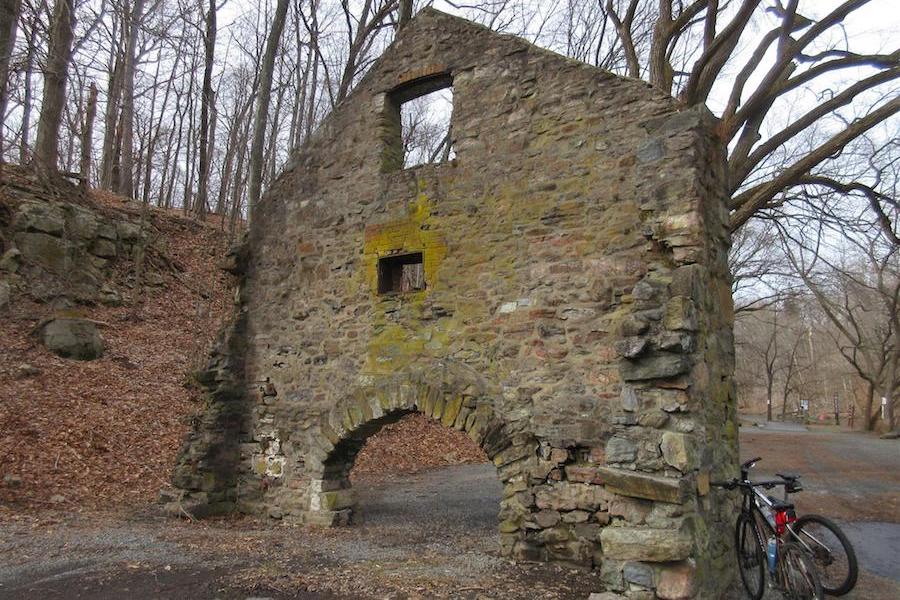
The 35-mile Patriots’ Path, located in northern New Jersey, winds its way through Morristown National Historical Park, the site of the 1,600-acre Jockey Hall Encampment. This area housed 10,000 Continental Army soldiers during the winter of 1779–80. Each year, the park hosts a Grand Encampment where re-enactors from all over the Northeast gather and the public can learn about the lives of soldiers and civilians during the Revolutionary War.
6. Erie Canalway Trail (New York)
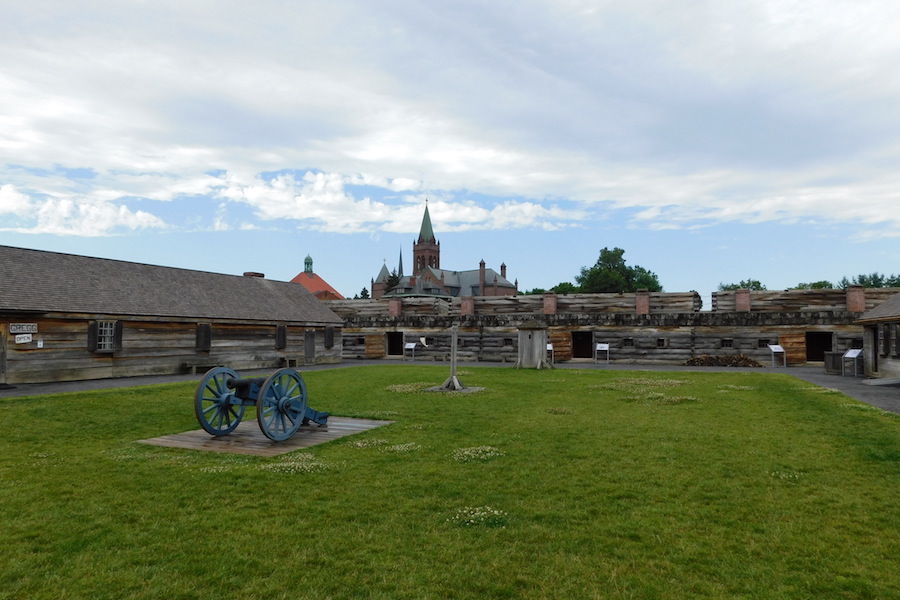
At just over 291 miles, the Erie Canalway Trail is our longest featured trail. It is also a part of the Empire State Trail system, a developing 750-mile route that, once completed, will connect trails from New York City to Canada, and Buffalo to Albany.
This path also has an extensive history. You will pass the 18th-century farmstead of Revolutionary War General Nicholas Herkimer, who died on his way to defend Fort Stanwix after a British ambush. As the trail meanders through Rome, you will learn the story of the fort that “never surrendered” at its national monument. Fort Stanwix successfully warded off a 21-day attempted siege by British-led enemy troops in August 1977. Patriot troops protected America’s northwest frontier from further attacks until the fort’s abandonment in 1781.
Saratoga National Historical Park, another storied destination, is the site of multiple victorious battles. Visitors can bike the 10-mile tour road, check out the museum and visit the estate of Revolutionary War General Philip Schuyler.
7. Thermal Belt Rail-Trail (North Carolina)
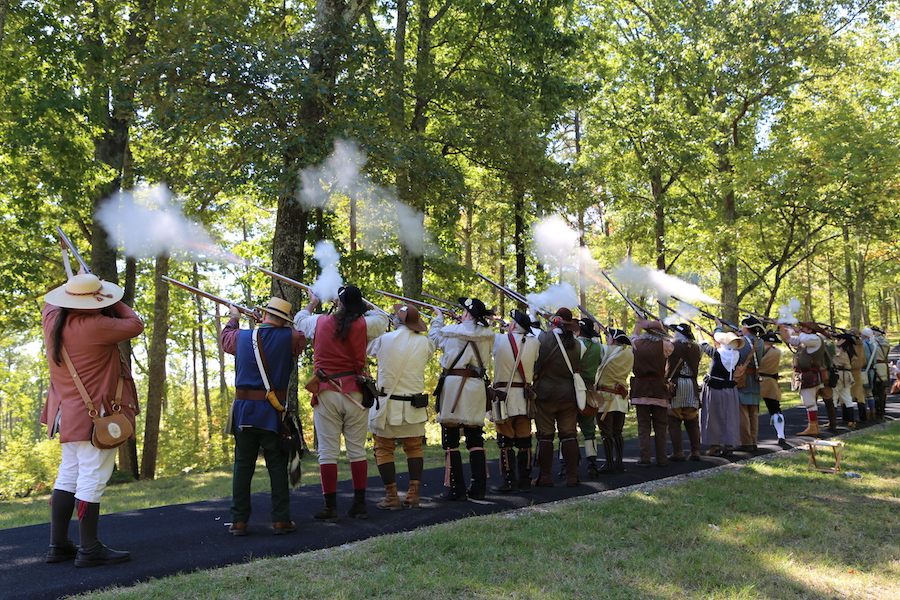
North Carolina’s Thermal Belt Rail-Trail connects adventurers to over 330 miles of history. In the town of Gilkey, the 8-mile rail-trail overlaps with the Overmountain Victory National Historic Trail.
At 330 miles, this hiking trail stretches through Virginia, Tennessee and the Carolinas. The trail honors the “Overmountain Men,” a patriot militia who came from the south to defend their homeland and participate in the Battle of King’s Mountain in 1780. President Thomas Jefferson deemed the battle a “turning tide of success” in America’s quest for independence.
Every Fall, there is an annual trail march complete with re-enactments to honor the bravery of the Overmountain Men.
8. Chester Valley Trail (Pennsylvania)
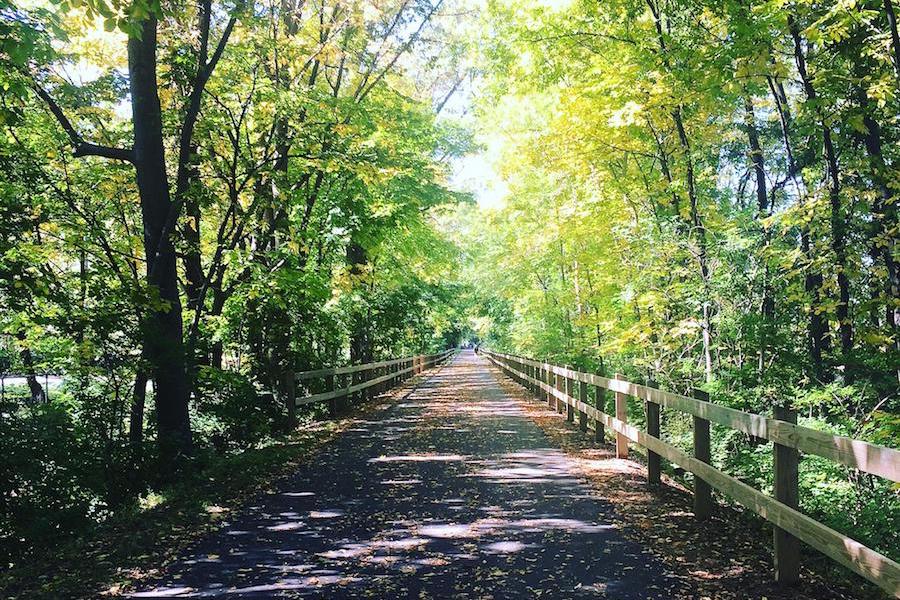
Just a mile off Chester Valley Trail in Malvern, Pennsylvania, is Battle of the Clouds Park, which commemorates a torrential Revolutionary War battle. In September 1777, a violent thunderstorm drenched the colonial troops’ gunpowder, causing them to retreat before fully confronting the British. The trail also brings travelers within a few miles of the site of the Paoli Massacre, an infamous battle in which the British took a group of Americans by surprise near the Paoli Tavern.
The 15-mile path runs through the northern edge of Greater Philadelphia and is a part of the Circuit Trails network. A planned extension of the trail will connect users to the Schuylkill River Trail, enabling access to Valley Forge National Historical Park.
9. Hop River State Park Trail (Connecticut)
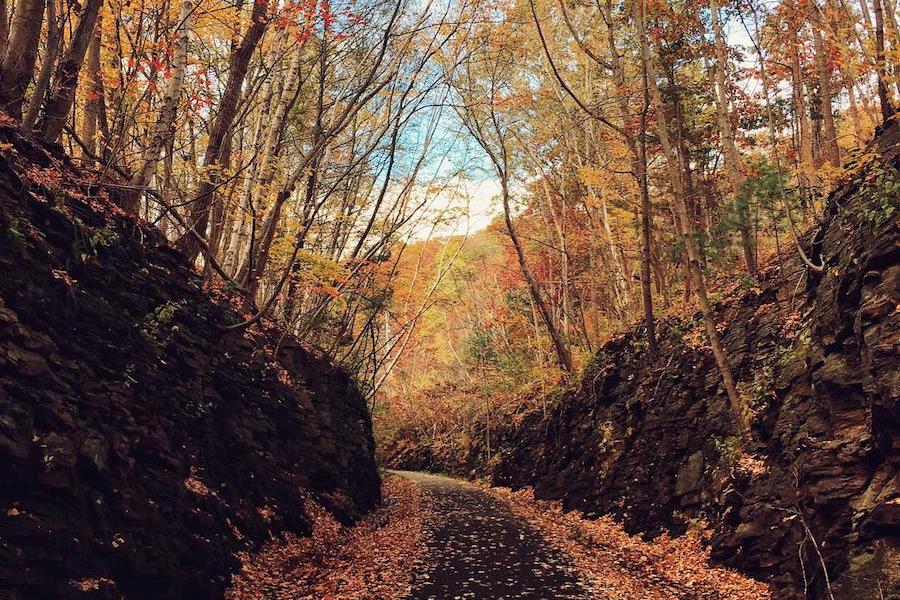
Nestled among dense forests, Connecticut’s 20-mile Hop River State Trail has multiple draws: stunning tree arches, wildflowers and a rich Revolutionary War history. The trail crosses six New England towns, including Coventry, where you can visit the homestead of famous American war hero Nathan Hale. Hale famously announced, “I only regret that I have but one life to lose for my country.”
Travelers can also explore the preserved campsite of Jean-Baptiste de Rochambeau, who led French troops under George Washington’s command, marching through the area next to the present-day trail.
10. Three Rivers Heritage Trail (Pennsylvania)
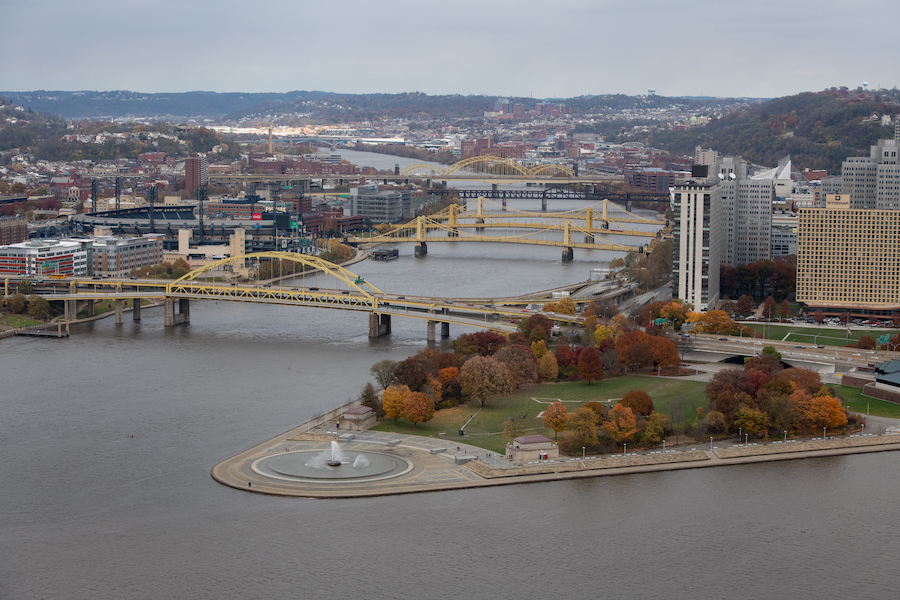
Pittsburgh’s Three Rivers Heritage Trail—which hosts a portion of both the 1,500-mile Industrial Heartland Trails Coalition network and the 3,700-miles-plus Great American Rail-Trail—traverses Point State Park, which sits at the junction of the Ohio, Allegheny and Monongahela Rivers. The park, a National Historic Landmark, is also said to have been home to multiple forts over the years, including Fort Pitt, which was under English control until colonists took it over during the American Revolution.
Near the confluence of the rivers is a stone outline of the forts and plaques that illustrate what the forts would have looked like in their heyday. You’ll also find Fort Pitt Museum, which documents Western Pennsylvania’s role in the American Revolution and the French and Indian War, and in the development of Pittsburgh.

Donate
Everyone deserves access to safe ways to walk, bike, and be active outdoors.